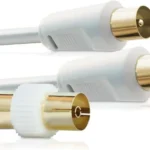Introduction
Working out at the gym can transform your health, strength, and confidence. But without proper form and awareness, one common risk often goes unnoticed — a hernia. Learning how to avoid hernia in gym is crucial for both beginners and experienced lifters. A hernia isn’t just uncomfortable; it can seriously limit your training and overall lifestyle. Fortunately, by understanding its causes and applying preventive techniques, you can protect your body and enjoy safe, effective workouts.
Understanding Hernia and Its Causes in the Gym
A hernia occurs when an internal organ pushes through a weak spot in your muscle or tissue wall. In the gym, this often happens when heavy lifting or improper breathing increases abdominal pressure. Common hernia types include inguinal (groin), umbilical (navel), and hiatal (upper abdomen).
When lifting weights, your abdominal muscles act like a natural brace. If the pressure becomes too high or your form breaks down, the tissue can tear. Ignoring body signals or rushing through reps without proper technique often contributes to this issue.
According to the NIH, hernias can develop gradually or suddenly, depending on your muscle strength and strain levels. This makes prevention all the more important.
Why It’s Important to Prevent Hernia in the Gym
Preventing hernia isn’t just about avoiding pain. It’s about maintaining long-term fitness and stability. Once a hernia develops, it rarely heals on its own — surgery often becomes the only solution. Taking early precautions allows you to train safely and keep progressing without interruptions.
Here are a few major benefits of learning how to avoid hernia in gym:
- Protects core stability and posture
- Reduces risk of painful recovery time
- Improves lifting performance safely
- Enhances longevity in training routines
Each of these benefits highlights how preventive care directly supports your fitness goals.
Signs You Might Be at Risk of a Hernia
Before diving into prevention strategies, it’s essential to recognize the warning signs. Early detection allows for timely rest and treatment.
Common symptoms include a visible bulge in the abdomen or groin, discomfort when lifting, and mild to sharp pain during exertion. Sometimes you may also feel heaviness or pressure in your lower abdomen. If these signs appear, consult a doctor immediately before continuing your workouts.
Tips on How to Avoid Hernia in Gym
Knowing how to avoid hernia in gym involves understanding your body, using correct techniques, and staying consistent with smart habits.
Warm Up and Stretch Properly
Start every workout with a dynamic warm-up to activate your muscles. This increases blood flow and prepares your core and joints for the load ahead. Gentle stretching also improves flexibility, reducing the chance of strain during heavy lifts.
Focus on Core Strength
A strong core is your best defense against hernia. Exercises like planks, bird dogs, and leg raises build endurance in your abdominal wall. Avoid excessive sit-ups or crunches that may strain the lower abdomen if done incorrectly.
A solid core acts as a natural belt, stabilizing your spine and reducing internal pressure.
Practice Proper Breathing
One of the most overlooked techniques in weight training is breathing. Holding your breath during a lift (the Valsalva maneuver) can dangerously increase abdominal pressure. Instead, exhale during exertion and inhale during relaxation. This simple habit significantly lowers the risk of hernia development.
Lift with Correct Form
Technique matters more than weight. Keep your back straight, engage your core, and never jerk or twist while lifting. If you feel your form breaking down, reduce the weight immediately. Overloading too early often leads to muscle fatigue and tissue weakness — key triggers for hernia.
Avoid Overtraining
Rest is as vital as training. Overworking your muscles without recovery weakens tissue fibers and increases injury risks. Follow a balanced routine that alternates between strength, mobility, and rest days.
Use Support Belts When Needed
A lifting belt can help support your abdomen during intense workouts. However, it’s not a substitute for strong core muscles. Use belts wisely — mainly for maximum lifts — and continue strengthening your body naturally.
Maintain a Healthy Weight
Excess body weight increases pressure on your abdominal wall, raising hernia risk. Combine regular exercise with a balanced diet rich in lean proteins, fiber, and healthy fats to maintain optimal muscle and tissue health.
Stay Hydrated
Dehydration affects muscle elasticity and overall performance. Drinking water throughout your workout ensures smoother muscle contraction and stability, preventing unnecessary strain on your abdominal region.
When to Do Hernia Prevention Exercises
Incorporate hernia prevention exercises two to three times a week. Ideally, perform them before or after your main workout as part of your warm-up or cooldown. These movements not only reduce injury risk but also improve your strength for compound lifts like squats and deadlifts.
Adding controlled breathing and proper engagement during these sessions builds muscle awareness, helping you recognize early signs of overexertion.
Benefits of Learning How to Avoid Hernia in Gym
Understanding and applying prevention strategies leads to many long-term benefits.
You’ll enjoy stronger lifts, better endurance, and improved body mechanics. Moreover, you’ll train with confidence, knowing you’re protecting your most vital muscle group — your core. Preventing hernia also saves you from medical costs and downtime, allowing consistent progress in your fitness journey.
If you’re serious about maintaining your health, you can read about how to avoid hernia in gym for a deeper guide with practical examples and expert advice.
When to Seek Medical Help
If you ever notice discomfort, a bulge, or pain that worsens while lifting, stop immediately. Persistent symptoms require evaluation by a healthcare professional. Ignoring these signs can turn a minor issue into a major complication. Always prioritize your health over performance.
The NIH recommends consulting a doctor as soon as hernia symptoms appear, as early intervention leads to faster and safer recovery.
Common Mistakes That Lead to Hernia in Gym
While enthusiasm fuels progress, poor judgment often causes injuries. Here are common mistakes that increase hernia risk:
- Lifting excessive weights without warm-up
- Neglecting form in pursuit of heavier loads
- Skipping core stability training
- Ignoring rest days and muscle recovery
- Improper breathing during exertion
Correcting these errors dramatically lowers your chances of developing hernia-related issues.
FAQs
What exercises should I avoid if I have a hernia?
Avoid heavy lifting, sit-ups, crunches, or leg presses that strain your abdomen. Always follow medical guidance for safe movements.
Can I lift weights after hernia surgery?
Yes, but only after your doctor clears you. Start with light resistance and gradually increase intensity under professional supervision.
Is it safe to work out with a mild hernia?
No. Even mild hernias can worsen under pressure. Consult a physician before resuming exercise.
How long does it take to recover from a hernia?
Recovery varies depending on severity and treatment. Most surgical recoveries take a few weeks to several months.
How can I strengthen my core without causing a hernia?
Focus on low-impact exercises like planks, pelvic tilts, and bird dogs. Avoid jerky or high-pressure movements.
Always listen to your body. Progress gradually, and never sacrifice form for speed or weight. Regular checkups with a trainer or physiotherapist help identify weaknesses early. Training smartly is not just about looking fit — it’s about staying healthy and injury-free for the long run.
Learning how to avoid hernia in gym empowers you to build strength safely and sustainably. With proper breathing, form, and awareness, you can push your limits without putting your health at risk. Every lift should feel controlled, stable, and supported by a strong core foundation.
Take action today to strengthen your body intelligently and protect your future workouts. For expert insights and additional wellness topics, explore More sports & fitness articles to keep improving every day.










